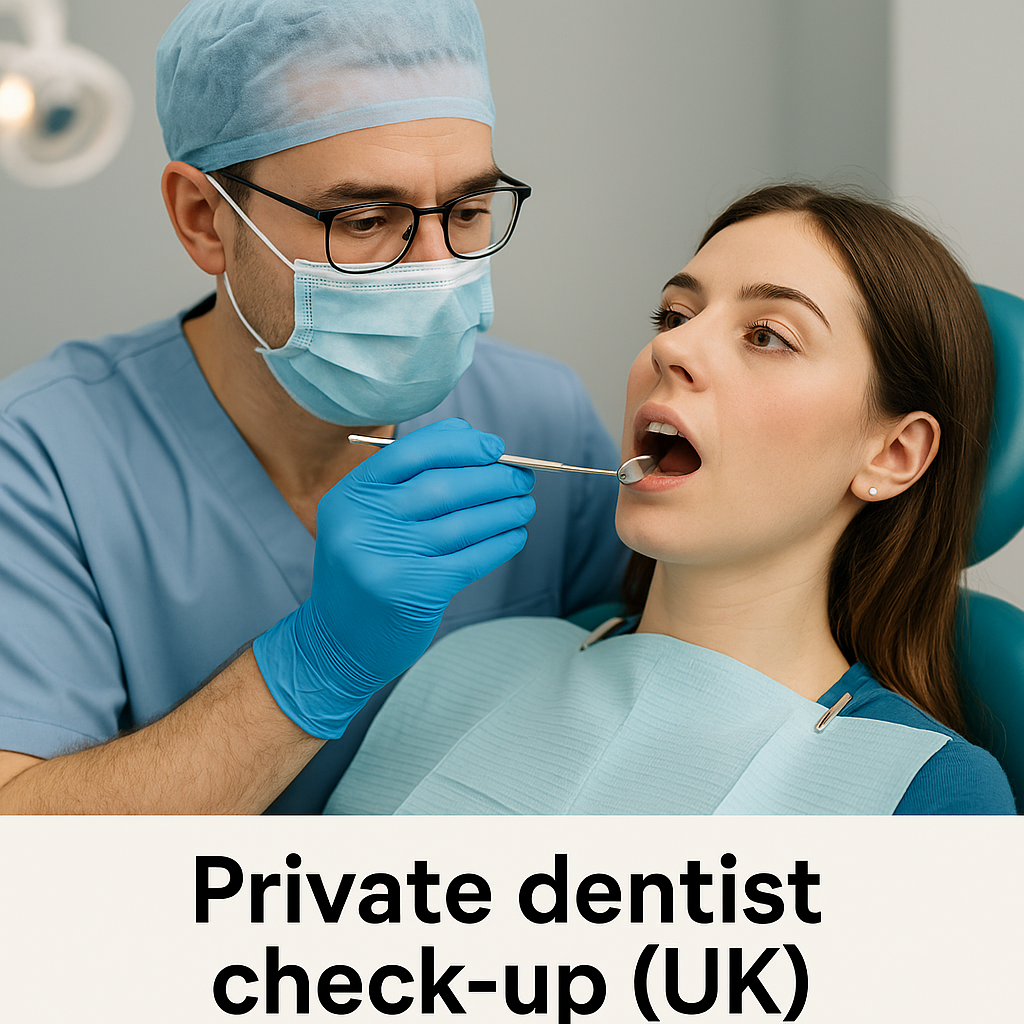UK Compare Private Health Insurance with Dental Cover (2025): Key Choices
In the UK in 2025, if you’re shopping for private medical insurance (PMI) it’s increasingly common to ask: “Does it include dental cover?” Many major providers now offer add-on dental benefits alongside their core health policies. For example, one insurer offers a £300 annual dental allowance plus one dental appointment as part of its private-health plan.
Standard private health vs bundled dental options
Standard private health insurance in the UK typically covers: inpatient treatment (surgery/hospital stay), outpatient diagnostics, possibly therapies and scans. However, dental cover is not always included. According to a comparison site: “With the exception of one, dental costs aren’t covered as standard with health insurance providers; however, some policies do offer optional dental add-ons.”
For example, Bupa offers a dental-allowance within some of its health-insurance products: one routine check-up per year plus up to £300 towards restorative dental treatment. So the value of “health insurance with dental cover” depends heavily on the policy wording and the level of dental benefit included.
What dental coverage adds (major work, implants)
When you choose a health-insurance plan with dental cover (or add-on a dental plan alongside), you may get the following types of dental benefits:
- Routine check-ups, hygienist appointments, cleanings.
- Restorative treatment – fillings, crowns, bridges. For instance, Bupa’s £300 allowance covers restorative treatment after an annual dental appointment.
- Emergency dental treatment (in some add-ons) such as accidental damage to teeth. Example: an insurer’s add-on offered £600 cover for accidental dental injury.
- Major dental work (e.g., implants, advanced oral surgery) – this is often excluded or subject to significant limitations, either by being in a “bolt-on” plan, having high excess, or being explicitly excluded.
Excess and premiums trade-offs
Adding dental cover to a private health plan (or choosing a policy that bundles dental) will influence premium and excess. Key considerations:
- Premium increase: Because dental adds risk/cost, expect a higher annual premium compared with core health-only cover.
- Excess (deductible) or limiting benefits: Dental benefits may come with their own excess (you pay the first portion) or annual maxima (e.g., only £300 per year). Example: Aviva’s dental add-on had a £50 excess and covered £250 routine dental benefit.
- Coverage cap: Many plans with dental add-ons set relatively low annual limits (in the hundreds of £) rather than thousands. Thus the cost-benefit depends on your expected usage of dental services.
- Comparison of trade-offs: If you’re young and low-dental-risk, you might choose a lower premium / minimal dental add-on. If you’re older or likely to need major dental work, a richer dental benefit (and higher premium) may make sense.
Therefore: when comparing plans, always consider not only the overall premium but the excess, maximum benefit, and scope of dental treatments included. A “cheap” plan with dental may cost less upfront but provide little actual benefit if you need major dental treatment.
Network vs open-dentist choices
Another important variable when including dental cover is whether you’re constrained to a “network” of dentists/clinics or free to use any dentist. Some plans require you to use provider-approved dental practices (which may limit choice) or only cover treatments at certain clinics. Others allow you to go to any dentist but may impose higher excess or lower reimbursement.
For example, Bupa’s dental-allowance requires treatment to be at a Bupa Dental Care practice. If you prefer higher flexibility, you’ll want to check your policy’s “approved-dentist list” and whether there are exclusions for out-of-network work.
Also: delivery of dental cover may vary – some policies pay cash back to you after you pay the dentist; others may require pre-authorisation or limit the amount reimbursed. When comparing plans: check whether you’ll have to pay large amounts upfront, whether you have waiting periods for dental cover, and whether there are sub-limits for certain treatments (like implants or orthodontics) or “cosmetic” exclusions (whitening, veneers) which are usually excluded.
How to assess value for your situation
Here are steps to assess whether a private health policy with dental cover is good value for you in 2025 UK:
- Estimate your likely dental needs over the next 1-3 years: e.g., routine check-ups, possible fillings/crowns, any anticipated major work (implants, etc.).
- Check what your current (or potential) plan offers: premium, excess, annual maximum for dental, scope of treatments included/excluded, network restrictions.
- Compare the extra cost of adding dental (or choosing a plan with dental) versus standalone dental-only insurance or a dental cash-plan. If the dental benefit is small (e.g., <£300/year cash allowance) and you likely need more, you might be under-insured.
- Check how dental cover interacts with your health plan: e.g., will you lose no-claims discounts, is dental separate from the main health excess or tied, are dental treatments counted as “private” vs NHS?
- Consider your location and private dental cost inflation: With private dental fees rising significantly in some UK areas, you may want a higher benefit limit.
- Finally, think about your overall healthcare strategy: If you primarily rely on the NHS for dental care and only want occasional extra cover, a modest dental add-on may suffice. However, if you want rapid, private dental access and/or expect major work, then you may need a richer plan or separate dental insurance plan (rather than just a modest embed into a health plan).
Key Takeaways
- When comparing UK private health insurance in 2025, check whether dental cover is included or whether you’ll need to add a specific bolt-on. Many policies don’t include it by default.
- Dental cover varies widely: some plans offer modest allowances (£300 per year for restorative treatment, one annual check-up) while others may offer broader scope—but always check excesses, annual maximums and exclusions.
- If you anticipate major dental work (implants, bridges, full-mouth rehab), a modest dental add-on may be insufficient. Either choose a richer dental-inclusive plan or a dedicated dental insurance plan alongside your health cover.
- Compare premiums plus terms: a slightly higher premium with better dental benefit and lower excess may deliver better value than the cheapest premium with minimal dental cover. Location, dentist cost inflation and your personal dental condition matter too.
- Check network restrictions and provider lists: treatment may need to be at approved dentists or clinics to get full benefit. If you prefer freedom of dentist choice, ensure your plan allows it—or be aware of cost implication.
References
- “Dental Cover (2025 Guide) – Comparing Health Insurance.” Compare My Health Insurance. comparemyhealthinsurance.co.uk
- “Health insurance with dental allowance – Bupa UK.” Bupa. bupa.co.uk
- “Private health insurance cost UK 2025.” AXA Health. axahealth.co.uk
- “Private health insurance – how to compare plans.” Vitality. vitality.co.uk
- “Dental insurance – UK guide.” MoneySavingExpert. moneysavingexpert.com

